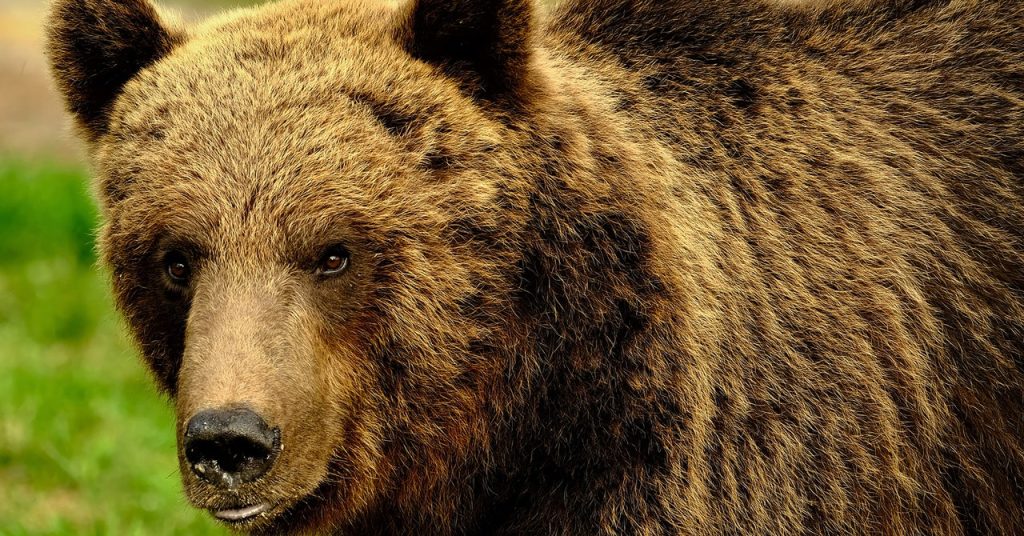Tragedy Strikes in Slovak National Park: Bear Attack Leaves One Dead, Another Injured
On March 15, as the sun began to set, a young Belarusian couple living in Poland found themselves in a terrifying situation while hiking in Slovakia’s Jasná resort. Constantin, 29, and Tatiana, 31, were attacked by a bear near the 4,718 foot-high peak of Na Jame in the surrounding national park. The exact details of the incident remain unclear, but the outcome was tragic.
Experts Weigh In on the Unusual Nature of the Attack
Although the bear was found near Tatiana’s body, wildlife expert Robin Rigg believes this doesn’t necessarily indicate a predatory attack. Rigg, who has seen some of the leaked photos, notes that the puncture marks on the woman’s leg appear to be claw marks rather than signs of feeding. He emphasizes that predatory attacks by bears are extremely rare in Europe and uncommon worldwide.
“It’s extremely rare in Europe to have predatory attacks, and it’s not a common thing anywhere in the world,” Riggs says.
Rigg suggests that the bear may have been startled by the couple’s appearance in an area where bears are known to hibernate, leading to an aggressive defensive reaction. Unfortunately, this nuance is often missing from media coverage of bear attacks, which tends to play into people’s instinctive fears.
Tensions Rise as Bear Sighting Sparks Concern
Just two days after Tatiana’s death, footage emerged of a bear running down a main street in Liptovský Mikuláš, lunging at pedestrians who had to jump over fences to escape. While no one was seriously hurt, the incident further fueled resentments and fears surrounding the presence of bears in the region.
Experts Propose Solutions to Prevent Future Tragedies
In the wake of a similar bear attack in Trentino, Italy, bear management specialist Tom Smith from Brigham Young University was invited to speak about how such issues are handled in North America. Smith suggests that the problem lies not with the bears, but with people’s lack of awareness and knowledge about how to behave in bear country.
“What you have here isn’t necessarily a bear problem, it’s a people problem,” he said.
Smith believes that with basic bear-awareness training, the number of dangerous or fatal encounters could be significantly reduced. By studying the North American Human-Bear Conflict Database, which contains data on 2,175 historic attacks, Smith has found that 60 percent of these incidents could have been avoided if people had behaved differently.
The Tragic Incident’s Impact on Bear Conservation Efforts
The Slovak government, like Trentino’s, is calling for the EU to strip bears of their “strictly protected” status. This move has biologists and biodiversity experts concerned, especially in light of the recent decision to downgrade wolves from “strictly protected” to “protected,” allowing for hunting. Robin Rigg believes that while the government’s statements may be partly political posturing, they likely feel emboldened by the recent change in wolf protection status.
As the debate surrounding bear conservation continues, it is crucial to find a balance between ensuring public safety and preserving these majestic creatures in their natural habitats. By educating the public and implementing effective bear management strategies, we can work towards reducing human-bear conflicts and fostering a harmonious coexistence.

5 Comments
Bears, huh? Guess it’s time we brush up on our “playing dead” skills… or not.
Is the bear danger overhyped, or are we not taking it seriously enough
Honestly, balancing bears and human safety sounds like a tightrope walk in a windstorm.
Bears sharing our backyards? That’s the plot twist 2023 didn’t see coming!
Living with bears? Sounds like Europe’s got an unexpected reality show brewing.